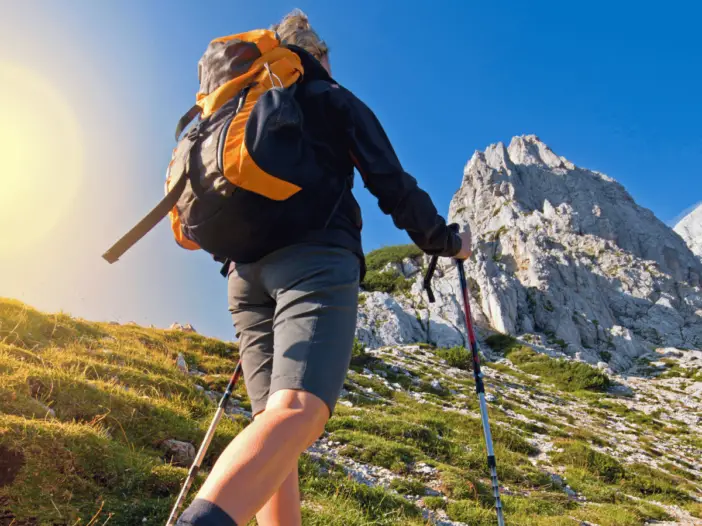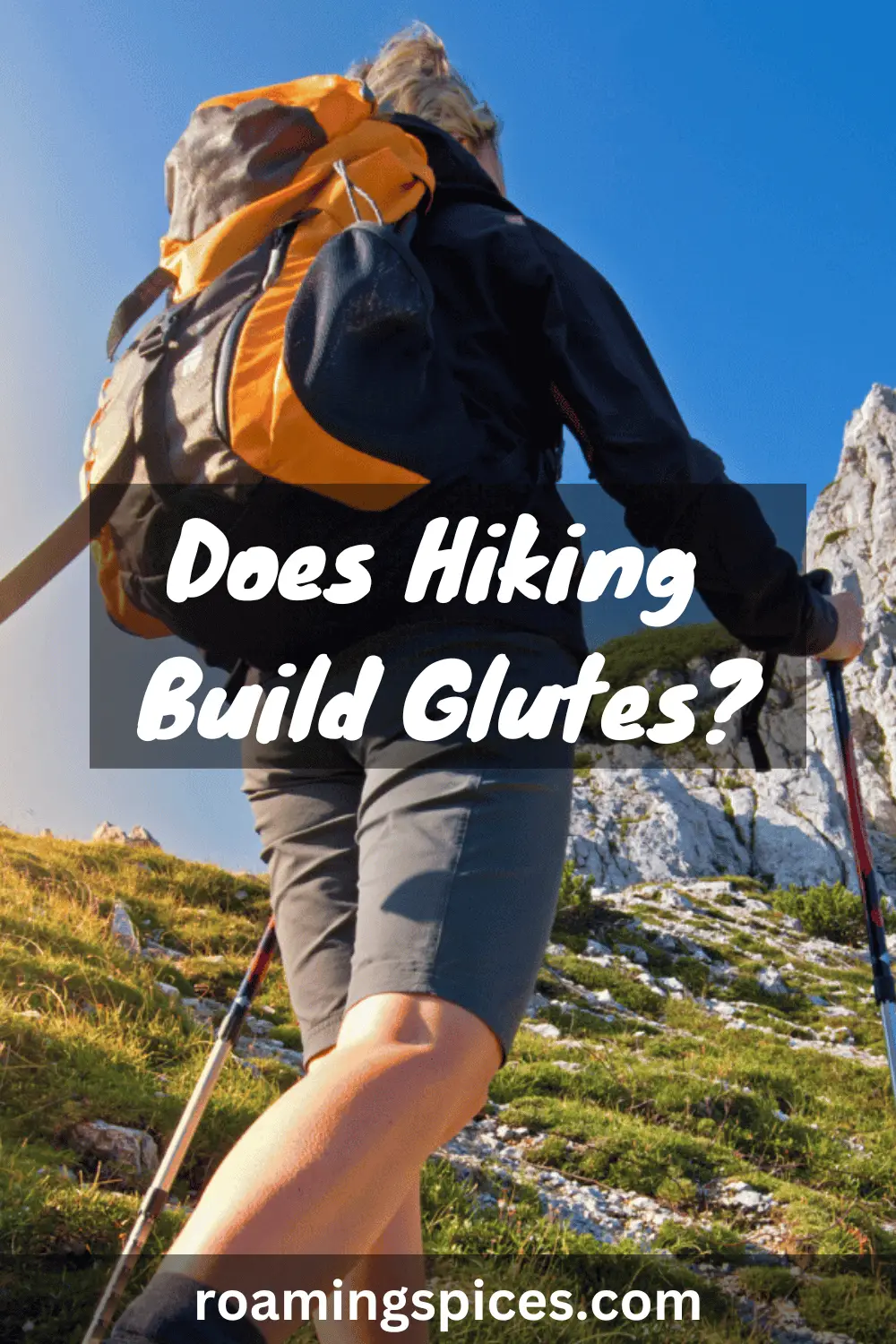
Health & Fitness
Are you wondering, “Does hiking build glutes?” The answer is a resounding yes! Hiking, with its uphill climbs, varied terrain, and constant engagement of the gluteal muscles, offers a powerful and enjoyable way to strengthen and tone your backside while enjoying the great outdoors
Introduction: Exploring the Impact of Hiking on Gluteal Muscles
Hiking is a great way to connect with nature, enjoy breathtaking scenery, and be a powerful workout for your gluteal muscles. The impact of hiking on the glutes is significant and can lead to muscle strengthening and toning.
Uphill hiking, in particular, engages the gluteal muscles as they work to propel you forward and upward. The uneven terrain and varying inclines activate different fibres within the glutes, leading to improved muscle activation and development.
The constant movement and endurance required during hiking enhance gluteal strength and stability. So, grab your hiking boots and hit the trail to experience the transformative impact of hiking on your gluteal muscles.
Anatomy of the Glutes: Understanding the Role of Gluteal Muscles
The gluteal muscles, consisting of the gluteus maximus, gluteus medius, and gluteus minimus, play a vital role in our body’s movement and stability. The largest of the three, the gluteus maximus, is responsible for hip extension, enabling us to stand, walk, and run.
The gluteus medius and minimus provide stability to the pelvis and assist in the abduction and rotation of the hip. These muscles contribute to lower body strength and power and help maintain proper posture and balance.
Understanding the anatomy of the glutes is crucial in comprehending their role in various movements and activities, including hiking, where they are heavily engaged.
Uphill Hiking: Engaging the Gluteal Muscles for Strength and Endurance
Uphill hiking is a fantastic way to engage and strengthen the gluteal muscles, providing the dual benefit of increased strength and endurance. As you ascend steep slopes, the gluteus maximus, the largest muscle in the gluteal group, is heavily activated to extend the hip and propel your body upward.
The gluteus medius and minimus also come into play, aiding in hip stabilisation and preventing excessive side-to-side movement. The constant engagement of these muscles, especially during uphill hiking, increases muscle fibre recruitment and overall strength development.
Additionally, the endurance required for sustained uphill climbs helps to improve the glutes’ ability to perform for extended periods, making uphill hiking an excellent choice for gluteal muscle development.
Downhill Hiking: The Impact on Gluteal Muscles and Lower Body Stability
Downhill hiking challenges the gluteal muscles and enhances lower body stability. As you descend slopes, the gluteal muscles, particularly the gluteus maximus, work eccentrically to control the movement and prevent your body from accelerating too rapidly.
This eccentric contraction creates tension in the glutes, leading to muscle strengthening and toning. The gluteus medius and minimus are crucial in maintaining lower body stability by stabilising the pelvis and controlling side-to-side movement.
Downhill hiking targets the glutes from a different angle, promoting muscle balance and coordination while improving overall stability in the lower body. This dynamic exercise offers unique benefits for gluteal muscle engagement and lower body control.
Trail Terrain and Glute Activation: How Different Surfaces Affect Muscle Engagement
The terrain you choose while hiking can significantly impact gluteal muscle engagement. Different surfaces and trail types offer varying levels of glute resistance and challenge.
Uphill trails with steep inclines require more forceful gluteal contractions to propel your body forward, leading to higher muscle activation.
Trails with uneven or rugged terrain, such as rocky or sandy surfaces, demand greater stabilisation and engagement from the gluteal muscles to maintain balance and control.
On the other hand, flat or well-paved trails may provide less resistance but can still contribute to muscle endurance and toning. By diversifying your hiking routes and experiencing different trail terrains, you can target your glutes uniquely and maximise muscle engagement and development.
The Importance of Proper Hiking Technique: Maximising Gluteal Muscle Activation
Proper hiking technique is essential for maximising gluteal muscle activation and reaping the full benefits of your hiking workout. When hiking, it’s crucial to maintain an upright posture, engaging your core and glutes.
You can enhance muscle activation and stimulate their growth by consciously squeezing your gluteal muscles with each step. Taking longer strides and pushing off with your toes can further engage the glutes.
It’s important to distribute your weight evenly and avoid leaning too far forward or backwards, ensuring that the gluteal muscles are appropriately activated throughout the hike.
By mastering proper hiking techniques, you can optimise gluteal muscle activation, increase the effectiveness of your workout, and enhance your overall hiking experience.
Hiking vs Other Exercises: Comparing Glute-Building Potential
While traditional exercises have their place, hiking can be an enjoyable and effective way to build and tone gluteal muscles while enjoying the great outdoors. When it comes to building glutes, hiking offers a unique and effective alternative to traditional exercises.
While exercises like squats and lunges are known for targeting the gluteal muscles directly, hiking provides a dynamic and engaging full-body workout. Uphill hiking engages the glutes similarly to squats, focusing on hip extension and building strength.
The varied terrain and constant movement of hiking challenge the glutes from different angles, promoting muscle activation and growth. Additionally, hiking offers the added benefits of cardiovascular endurance, fresh air, and connection with nature.
Safety Considerations: Preventing Injuries and Overuse of Gluteal Muscles
When hiking to build gluteal muscles, it is essential to prioritise safety and prevent injuries or overuse. First and foremost, warm up before your hike to prepare your muscles for the activity. Gradually increase the intensity and duration of your hikes to avoid overexertion.
Ensure you have proper footwear with good traction to maintain stability and reduce the risk of slips or falls. Listen to your body and take breaks to prevent fatigue or muscle strain. Stretching after your hike can also help with muscle recovery and flexibility.
By paying attention to safety considerations, you can enjoy the benefits of glute-building hiking while minimising the risk of injuries.
Conclusion – Does Hiking Build Glutes
So, does hiking build glutes? In a word, hiking is an excellent activity for building and strengthening the glutes. Combining uphill climbs, varied terrain, and constant movement engages the gluteal muscles, increasing muscle activation, strength, and endurance.
Whether conquering steep inclines, navigating rocky trails, or enjoying a leisurely hike, your glutes are hard at work. However, it’s important to note that hiking alone may not achieve significant muscle growth.
Supplementing your hiking routine with targeted glute exercises and strength training can enhance your results. So, lace up your hiking boots, hit the trails, and enjoy the journey towards stronger, toned glutes while immersing yourself in the beauty of nature.
Like Our Article? Please Pin it!


Leave a Reply